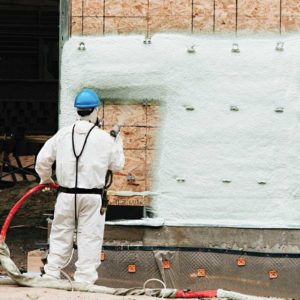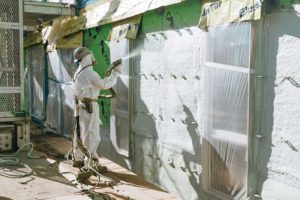Sprayfoam to HFO: the blowing agent’s shift explained

By Doug Brady
Spray polyurethane foam (SPF) is a building material commonly used in insulation and roofing applications. The material is manufactured in three core densities which correspond to the material’s application or use. The first is open-cell insulation, commonly offered at 8 kg/m3 (0.5 lb/cf) density, the second is closed-cell insulation, commonly offered at 32 kg/m3 (2 lb/cf) density, and the third is roofing SPF, commonly sourced at 40 to 56 kg/m3 (2.5 to 3.5 lb/cf) density.
The sprayfoam industry is currently leading an important effort which directly impacts closed-cell SPF insulation and roofing SPF. This initiative is a shift from using hydrofluorocarbons (HFCs)-based blowing agents to using hydrofluoroolefins (HFOs)-based blowing agents.
HFCs are any of several organic compounds composed of hydrogen, fluorine, and carbon, while HFOs are unsaturated organic compounds composed of hydrogen, fluorine, and carbon. Unlike traditional HFCs and their blowing agent predecessors, chlorofluorocarbon (CFCs), both of which are saturated, HFOs are olefins, otherwise known as alkenes.
The push towards HFO-based sprayfoam technology is the latest step in an ongoing evolution to phase out the use of chemicals known to harm the ozone and climate. In addition to reducing the negative environmental impacts of sprayfoam insulation and roofing materials, there are also product performance and installation considerations. This article will explain the blowing agent shift and why it matters to those considering the specification of sprayfoam applications in commercial building projects.

Blowing agents explained
The Handbook of Foaming and Blowing Agents defines a blowing agent as “a substance which is capable of producing a cellular structure via a foaming process in a variety of materials that undergo hardening or phase transition, such as polymers, plastics, and metals.”1 There are two types of blowing agents: chemical and physical. Above a certain temperature, or in contact with another specific chemical, they initiate a chemical reaction which generates a gas. At the same time, a solid plastic forms; and the formation, along with the generation of a gas (chemical and/or physical) create a solid foam structure. Physical blowing agents are metered into the plastics, most frequently in the form of a melt, and they form bubbles by various means.



